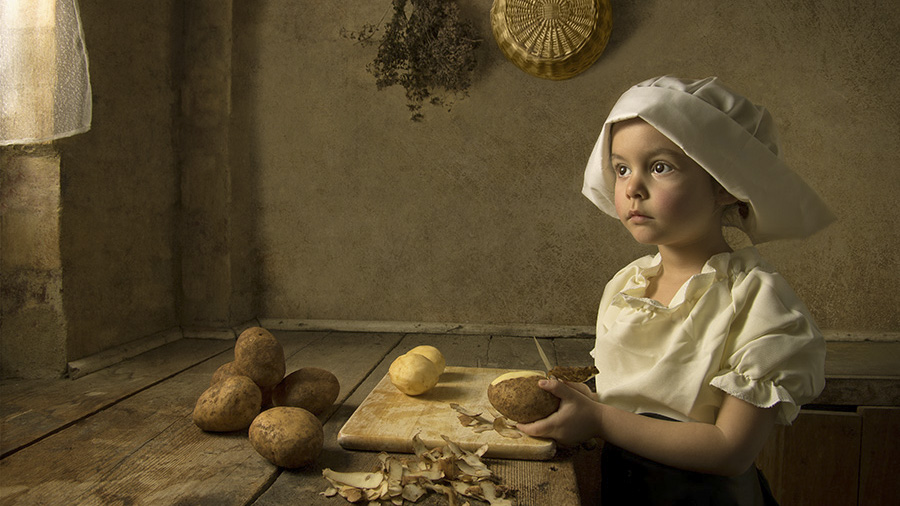Welcome to our series of 100 interviews we will be holding with photographers who use mirrorless cameras for their work! “Switching to a smaller and lighter system” has become somewhat a buzz phrase as of late, but many working photographers take this philosophy seriously. From medical reasons such as resolving back and shoulder pain to the simple realisation that bigger does not mean better, photographers are turning to mirrorless systems now more than ever before.
This week’s interview is with Bill Gekas, a self-taught portrait photographer from Melbourne who rose to fame with his fine art portraits of his daughter Athena. Originally a Pentax user, he switched to the Fujifilm X series for his work last year, investing first in the X100s and then in the X-E1 and X-T1. His photographs have been featured in various publications and media outlets including BBC, NBC Today, ABC News, Daily Mail and others.
Visit Bill’s website and check out his work on Facebook and Twitter.
All images in this article are property of Bill Gekas and are published with permission.
1. Who is Bill Gekas in three simple sentences?
In order of priority, I’m a father to my daughter Athena and a husband to my wife Nikoleta. I own and run a business in the manufacturing sector of the construction industry which is my full time profession. And thirdly, I’m a photographer who’s consistently practicing the craft and refining his technique in the genre of portraiture.
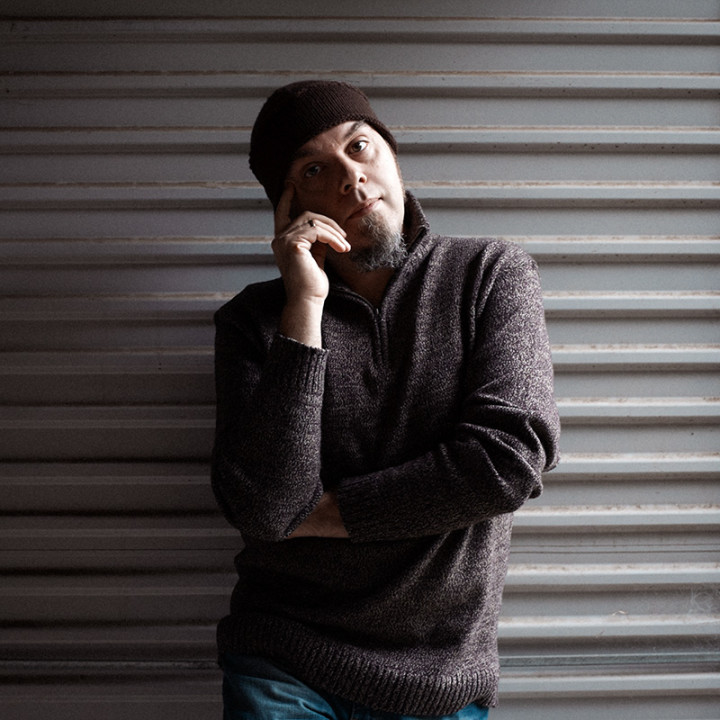
2. It is clear that your portrait photography has been greatly influenced by the works of old master painters – Caravaggio, in particular, comes to mind. How did you come to define your style?
I’ve always enjoyed viewing the works by the famous old master painters – Vermeer, Caravaggio, Rembrandt, Velazquez etc. but I could never draw or paint. So when I switched to a completely digital workflow in 2005, I was able to experiment and refine my technique using the photographic medium without the expense and time factor associated with traditional film based photography. By studying the works of these painters and how they used light, shadow, colours and tones I was able to recreate the overall atmosphere these works were known for using a camera, lighting and some post processing techniques.
I learnt many things along the way and perhaps the most important thing was that it’s never one key element of the craft that defines the style but more a sum of all the parts working together. It’s been an interesting few years and my style is still evolving. I don’t know exactly where my style will end up but it’s the journey I’m on that is more interesting to me than the final destination. Subconsciously I sort of hope I never reach the destination.
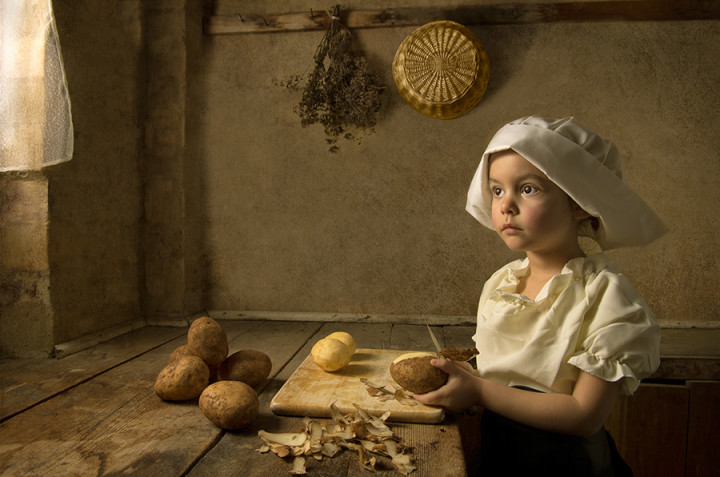
3. Your daughter is the protagonist of most of your portraits. How do you go about directing her during a shoot? Does she have any input in the creative process?
When she was younger in her earlier years I discovered very quickly that most kids generally don’t like to pose for very long. For sure you might get lucky once in a while but the key was to make this project a fun family type collaboration between my wife, daughter and myself.
What I found out is that in most cases when a child wears a costume they sort of put on a character mask and start acting things out. It’s a fine line between posing and acting but for a child that line is wider apart. I noticed this in the earlier stages when I had the photography set all ready and she just wandered onto it and was acting out a scene. This was sort of the moment for me that clicked in how to make it a fun experience for her. To photograph her without really asking her to pose but more just positioning her and asking her to give me a glance occasionally into the camera.
As most of the work is in the pre-production and planning, the shoots don’t last very long as we’re only aiming for one image from each shoot and we only shoot once every month or two these days. It’s been a great experience for all of us over the years and now that she’s older at the age of 8 she understands and respects the project as a body of fine art work.
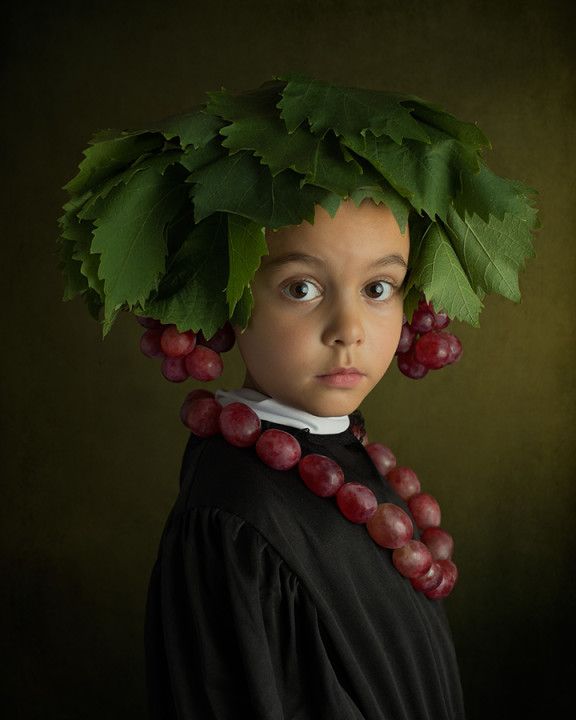
4. How does she feel about being the star of your photographs?
As parents nothing makes us happier than seeing her happy and this usually is reflected every time a magazine or other publication arrives at our doorstep with the work in it featuring her. This means more to us than any of the awards the works have won over the years and a testament to the importance of the print being more meaningful than seeing it shared around the internet on screens. She’s also at the age now where she’s well aware of the recognition the works have had and although she enjoys showing the works to her friends she’s not usually recognizable in the works when she’s in her day to day clothes. A costume, some props and careful lighting can make all the difference.
5. Your photographs always feature many props, including authentic period costumes. How do you decide which props to use and where do you obtain them?
This is part of the pre-production work that me and my wife usually plan out days or weeks ahead. Sourcing props and costumes has always been a challenge and in most cases when we don’t find something we’re looking for we have to compromise somewhere. Ideally we like to buy things from antique markets or even sourcing things online but in many cases my wife Nikoleta has had to make a costume by sewing something together to make it resemble a costume for the brief shoot. I was fortunate that in a more recent shoot I collaborated with a well respected historical costume designer (Liesbeth van Muyden) from the Netherlands and a Dutch period costume was specifically made for my daughter for a few of the shoots.
I’ve learnt many things along the way and one important thing I’ve learnt doing these conceptual shoots is that the creative process doesn’t just start and stop at the camera, it’s the whole process from planning concepts, making things and in the end to how we present the work. The most valuable lesson I’ve learnt over the years is that good photography is more about problem solving and compromises than it is art direction and fancy gear.
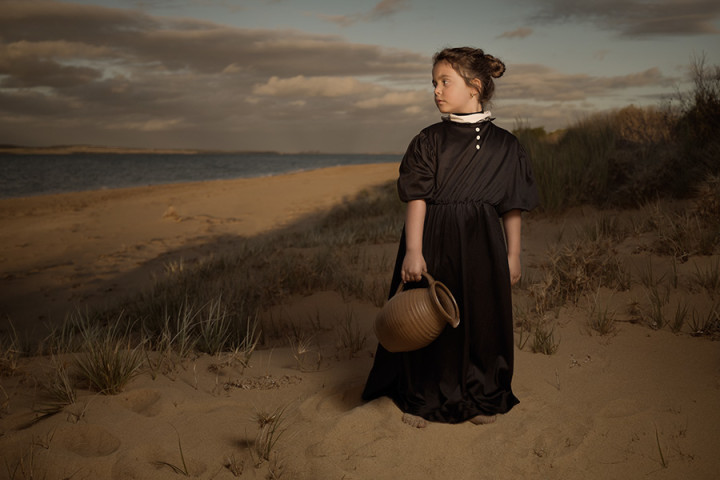
6. Could you give us some insight into how you light your portraits to make them resemble paintings?
I try to keep the shoots as simple as possible equipment wise and if I can get away with one light or even just natural light I’ll take that any day of the week.
Although painters like Caravaggio were known more for their hard light I personally prefer the softer light of Vermeer and I usually try achieve this lighting by placing the light modifier as close to the subject as possible usually just out of frame, unless it’s a larger light source where placing it too close isn’t necessary and can be detrimental by flattening everything out. I don’t go by numbers or anything but now it’s just from experience where I’ll place the light approximately as a starting point and then make fine adjustments to get the right falloff angles etc. I’ve had to use many light modifiers with my work from grids to cookies to bare bounced strobe as fill but generally for key lights when I’m shooting indoors in a studio type environment I use a medium sized softbox or octabox around the 28-30″ size as a key light. When shooting outdoors I prefer the simple 43″ shoot thru umbrella. Each of these modifiers has their advantages and disadvantages and the environment I shoot in will dictate which type of light modifier I use.
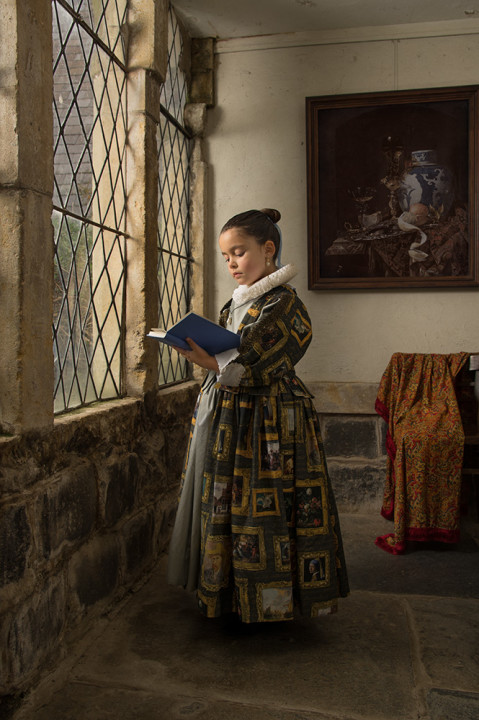
7. How much post-processing goes into your images?
As I’ve come from a background of developing film and darkroom printing my own work in the past, I believe that post processing is just another part of the photographic workflow. I use Lightroom for cataloging and highlight/shadow/sharpness adjustments. Then I import into Photoshop for the more detailed work like dodging and burning selective areas, highlighting certain colours and final colour grading the image. When I’m shooting though, I always have in my mind exactly what I’m shooting with a precise idea of what I’ll be doing in post-processing. Shooting with the intention of post-processing however should never ever be an excuse for poor camera techniques during the shoot. Output from the camera has to be as perfect as possible which also makes the preconceived post work a lot easier.
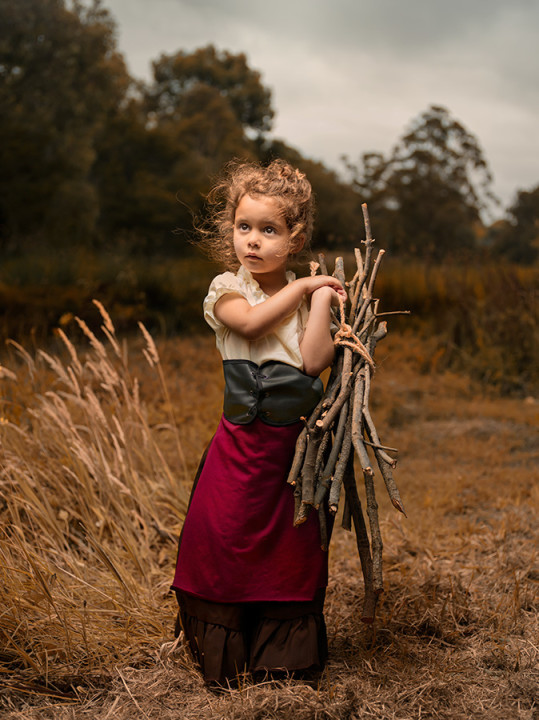
8. Many of your more recent portraits were taken with the Fujifilm X100s, X-E1 and X-T1. Why did you decide to switch to the Fuji X system from your Pentax K5?
I started my photography with the Pentax system, from a K1000 mechanical 35mm film SLR in the early 90s right through to their more recent K3 DSLR. The system, for what I was doing, worked great. I had no complaints at all. I was never interested in the latest features as every camera I came across had their pros and cons. The thing that kept me with the Pentax system all those years was that I found it to be the most transparent camera to use. It had a logical interface and ergonomics that I valued more than what the other main players were offering in terms of features and so on.
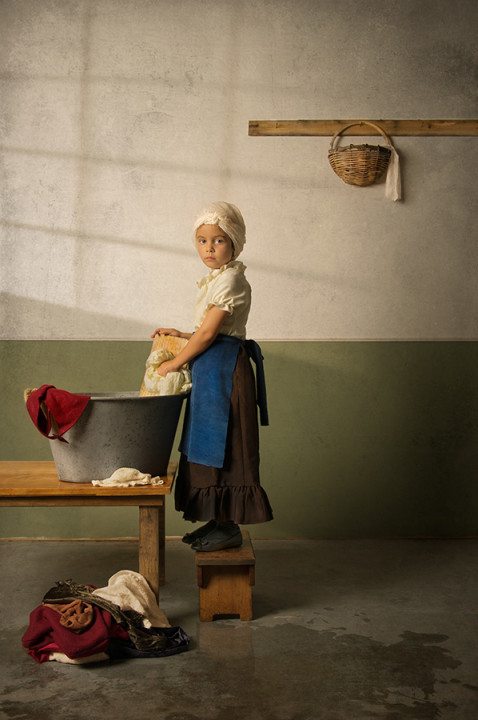
About mid last year in 2014, I decided to buy a camera that I could just carry with me everywhere and it so happened that the Fuji X100s ticked all the boxes. After buying it I realized it was more than I expected. The output file quality was equal to or better than what I was using, the ergonomics and user interface were very well thought out and it somehow gave me the same joy of when I was shooting with older film cameras but with the added convenience of digital. I was very impressed with it and more so when I realized I could sync my strobe at 1/1000s due to the camera’s leaf shutter design. On top of that, it had an built-in ND filter that would allow me more creative control in taming bright ambient light than what I could achieve previously. That’s when I started looking at the system more seriously and I finally decided to sell all my Pentax gear. I have since acquired an X-E1 and X-T1 along with most of the Fuji focal lengths. The system switch across to Fuji is a decision I haven’t looked back on. The cameras are lighter, image quality equal to or better than most, ergonomics and interface a pleasure to use and the Fujinon lenses have amazing image quality and build characteristics.
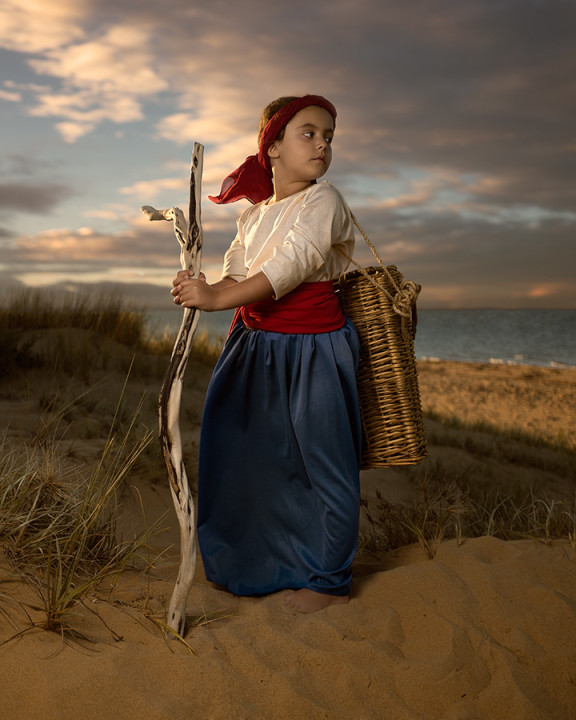
9. What are your go-to lenses for the system?
As I like to get a bit more in my frames, I’m generally a wide to normal focal length shooter. My most recent conceptual on location shoot (The Attic) was with the X-T1 & Fujinon 10-24 lens at around 14mm. All the other previous shoots with the Fuji system have been done with the Fuji X100s as the 23mm focal length is sort of a sweet spot for most of the work I do. Since then I’ve also bought the Fuji 23mm/1.4 which has filled the gap in my Fuji lens lineup for the other X-E1 and X-T1 bodies. I can see the 10-24, 23/1.4 & 35/1.4 perhaps being the lenses that will cover almost 100% of my work. As I generally light most of my work I find I’m usually working at around f4 – f5.6 so I can probably get away with the excellent 18-55 kit lens. Although after testing it myself, I think it’s not fair to call it a kit lens. It’s a lot better than that and could be an option if I wanted to travel really lightweight with just one lens.
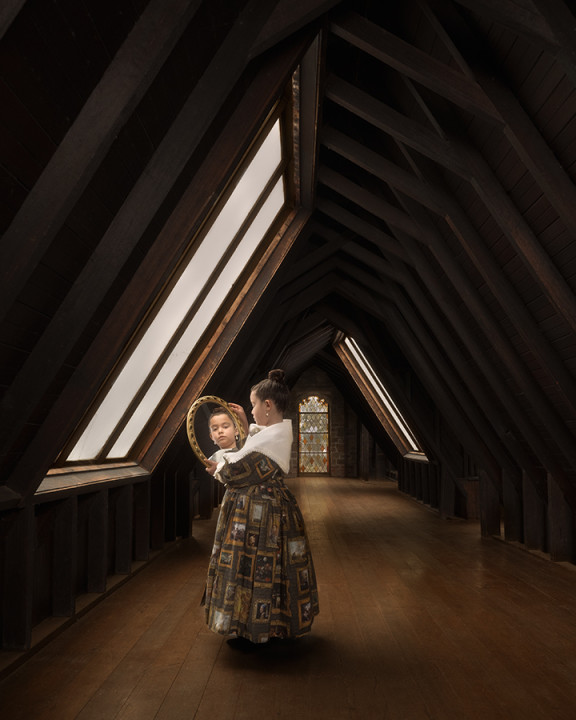
10. What would you like to see from the next generation of Fujifilm cameras?
Like many others, I’m looking forward to the release of the X-Pro2 which will be my main camera for my future work. With the slower methodical way I approach my portrait work I’m sure it’ll still be more camera than what I need. Ideally though I’d like to see a 1/250s flash sync speed and the Adobe DNG raw output format as an option. They’re perhaps my only wants at this stage.
11. Besides portraiture, are there any other genres of photography you enjoy?
Since earlier this year, I’ve taken a small detour in my journey and have decided to shoot some street photography as a casual side project. I decided on street as it’s a completely different discipline to the more controlled environment of what I’ve been doing over the years. It’s been challenging but at the same time very rewarding and it’s been an eye opener in that any control I had with my conceptual work is taken away from me on the streets. For my street work I’m using a Ricoh GR as I found the focal length and camera size favourable in how I approach my street work. Ultimately it’s just a side project and a part of my journey which I think will influence in some ways, or perhaps none, how my portrait photography evolves.
12. What advice would you give to a budding portrait photographer?
With this type of conceptual work, planning is key. We don’t just go out on the chance that something may work. By envisioning what you want to achieve and planning all the aesthetics and technicals beforehand, the probability of success are a lot higher than just chancing it.
Light and shadow always play a key role in the overall mood of the image. As important as light is and how you ultimately decide to light your subject in relation to the environment, you must never underestimate the aesthetic quality of shadow and width of transitions. That’s something that’s usually evident when viewing great portrait works. Although many concepts, ideas and other things have been done years before, there’s still plenty of room to take a concept, play with it, twist it, experiment with it and then make it your own whilst enjoying this lifelong journey of photography.
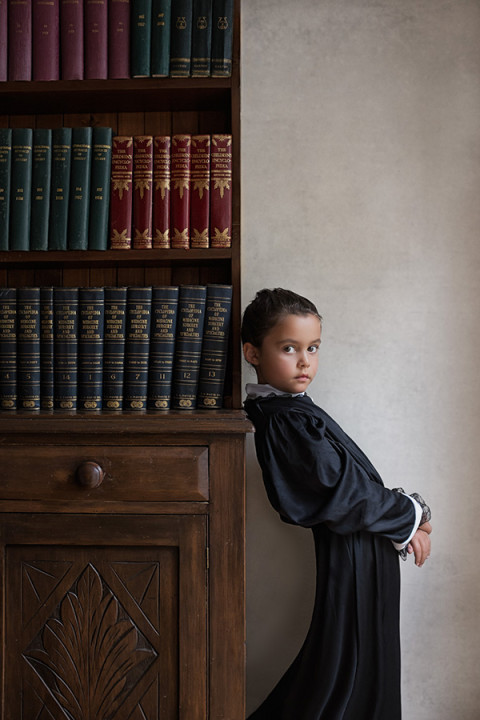
Do you have any questions for Bill about his work or the Fuji X series? If so, leave him a comment below!
